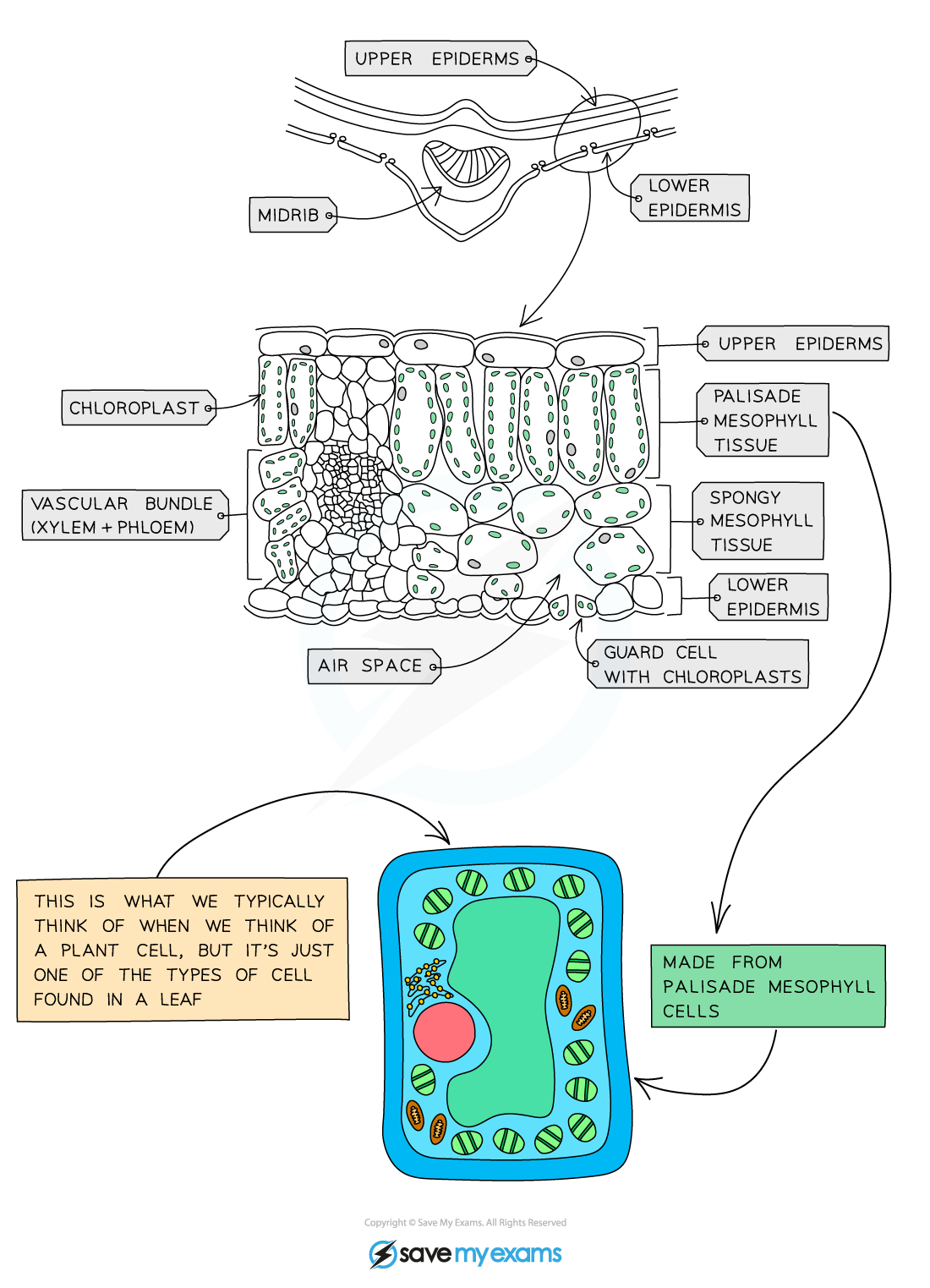Leaf: Structure & Adaptations (Edexcel IGCSE Biology (Modular)) : Revision Note
Did this video help you?
Leaf Structure
Plant leaves have complex structures with layers of different tissues containing specially adapted cells
The table below describes the different structures in a leaf and their functions
Leaf structures table
Structure | Description |
|---|---|
Wax cuticle | Protective layer on top of the leaf, prevents water from evaporating |
Upper epidermis | Thin and transparent to allow light to enter palisade mesophyll layer underneath it |
Palisade mesophyll | Column-shaped cells tightly packed with chloroplasts to absorb more light, maximising photosynthesis |
Spongy mesophyll | Contains internal air spaces that increase the surface area to volume ratio for the diffusion of gases (mainly carbon dioxide) |
Lower epidermis | Contains guard cells and stomata |
Guard cell | Absorbs and loses water to open and close the stomata to allow carbon dioxide to diffuse in, oxygen to diffuse out |
Stomata | Where gas exchange takes place: opens during the day, closes during the night. Evaporation of water also takes place from here. In most plants, found in much greater concentration on the underside of the leaf to reduce water loss |
Vascular bundle | Contains xylem and phloem to transport substances to and from the leaf |
Xylem | Transports water into the leaf for mesophyll cells to use in photosynthesis and for transpiration from stomata |
Phloem | Transports sucrose and amino acids around the plant |

Diagram showing the cross-section of a leaf
The specialised cells in leaves have adaptive features which allow them to carry out a particular function in the plant
Leaves have a large surface area to increase the area for the diffusion of carbon dioxide and absorption of light for photosynthesis
Leaves are thin, which allows carbon dioxide to diffuse to palisade mesophyll cells quickly
Chlorophyll in the leaf absorbs light energy so that photosynthesis can take place
The network of veins in the leaf allows the transport of water to the cells of the leaf and carbohydrates from the leaf for photosynthesis (water is used for photosynthesis, and carbohydrates are a product of photosynthesis)
Stomata in the leaf allow carbon dioxide to diffuse into the leaf and oxygen to diffuse out
The epidermis is thin and transparent, allowing more light to reach the palisade cells
The thin cuticle made of wax protects the leaf without blocking sunlight
The palisade cell layer at the top of the leaf maximises the absorption of light as it will hit the chloroplasts in the cells directly
The spongy layer contains air spaces that allow carbon dioxide to diffuse through the leaf, increasing the surface area
Vascular bundles have thick cell walls, which help to support the stem and leaf

You've read 0 of your 5 free revision notes this week
Sign up now. It’s free!
Did this page help you?
